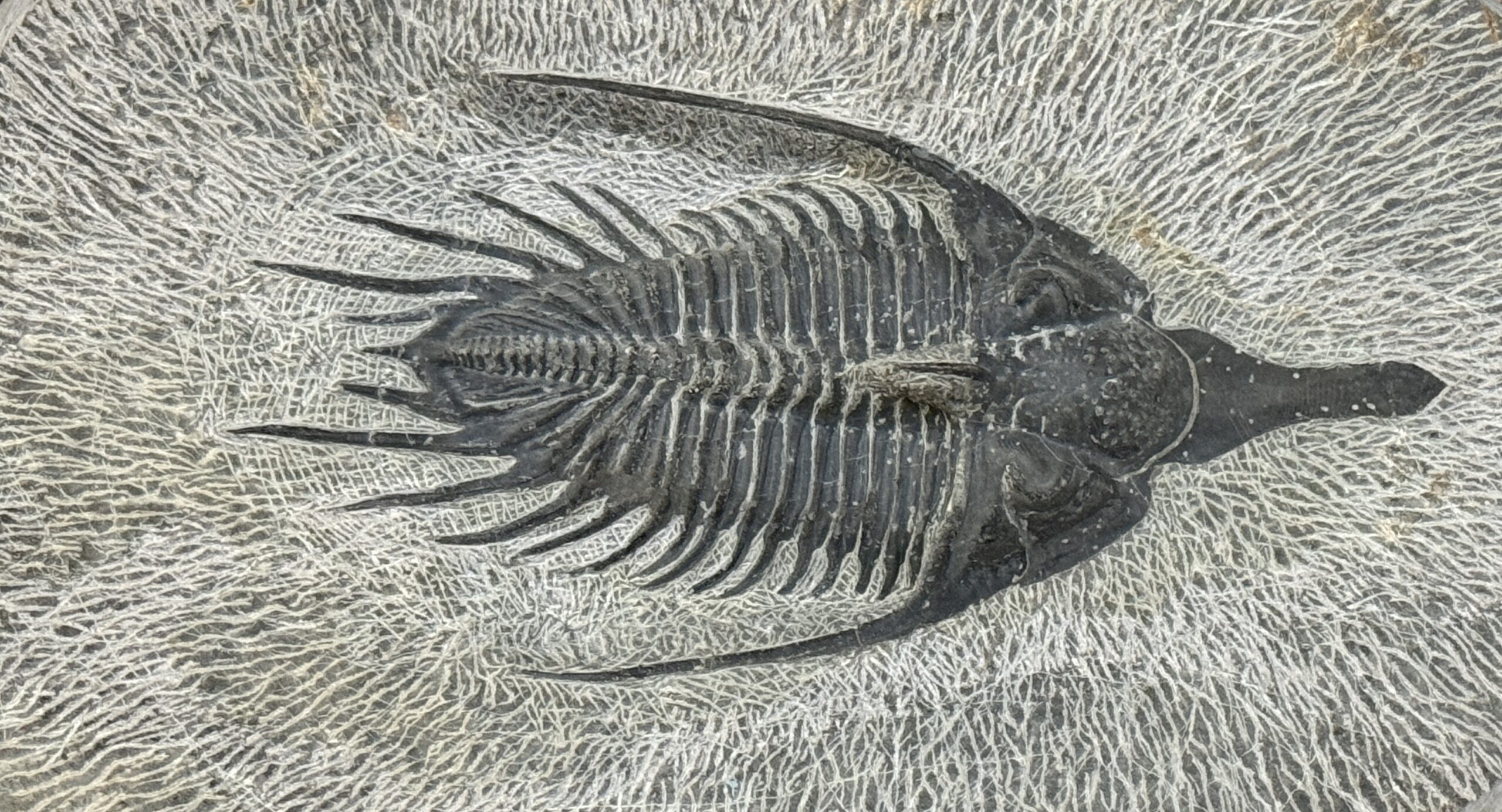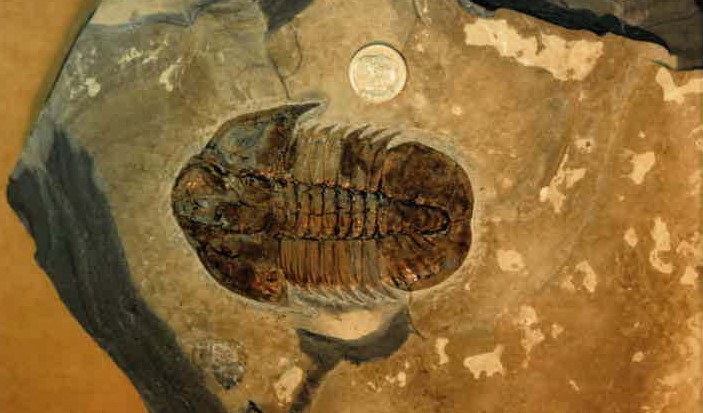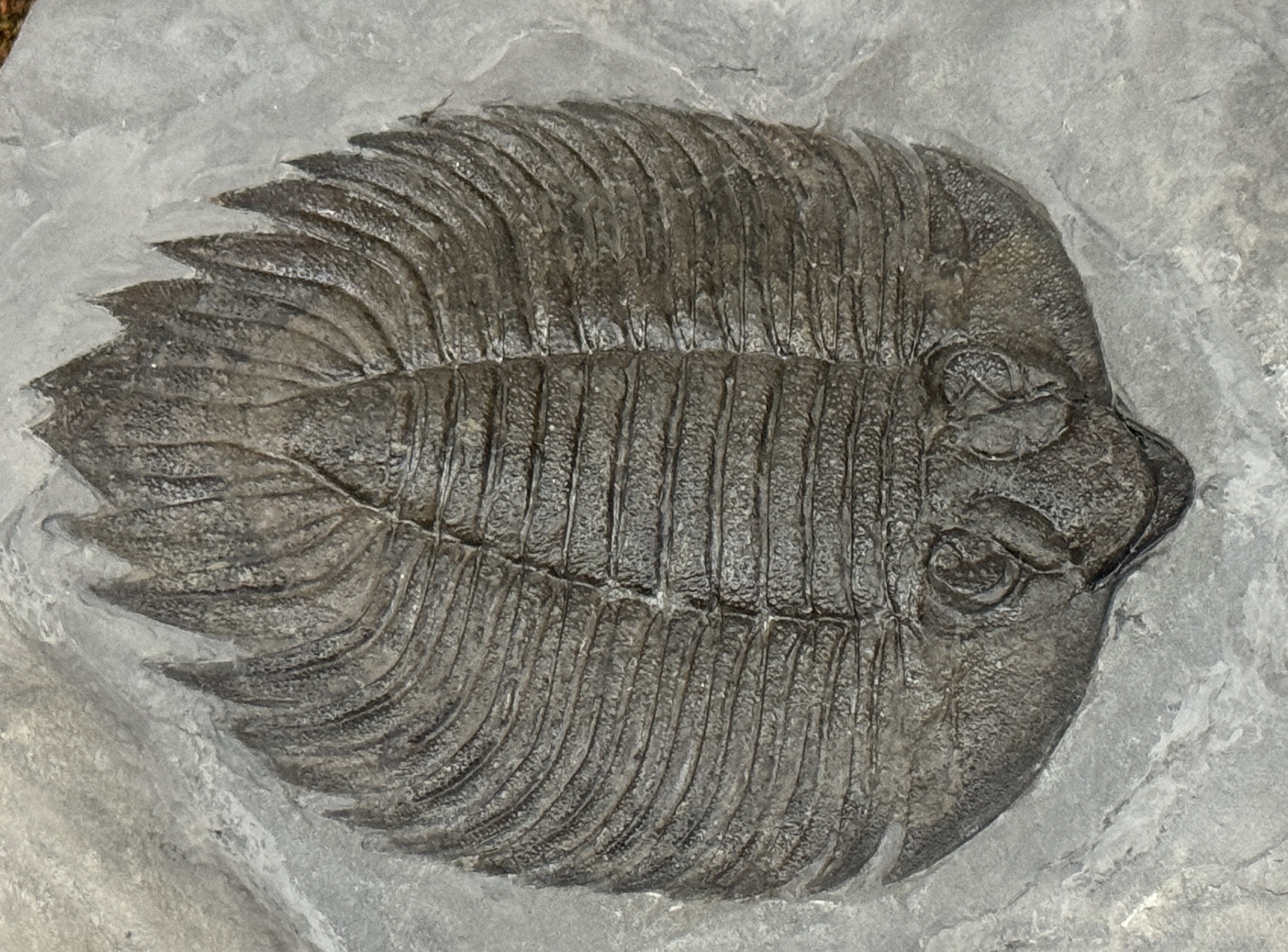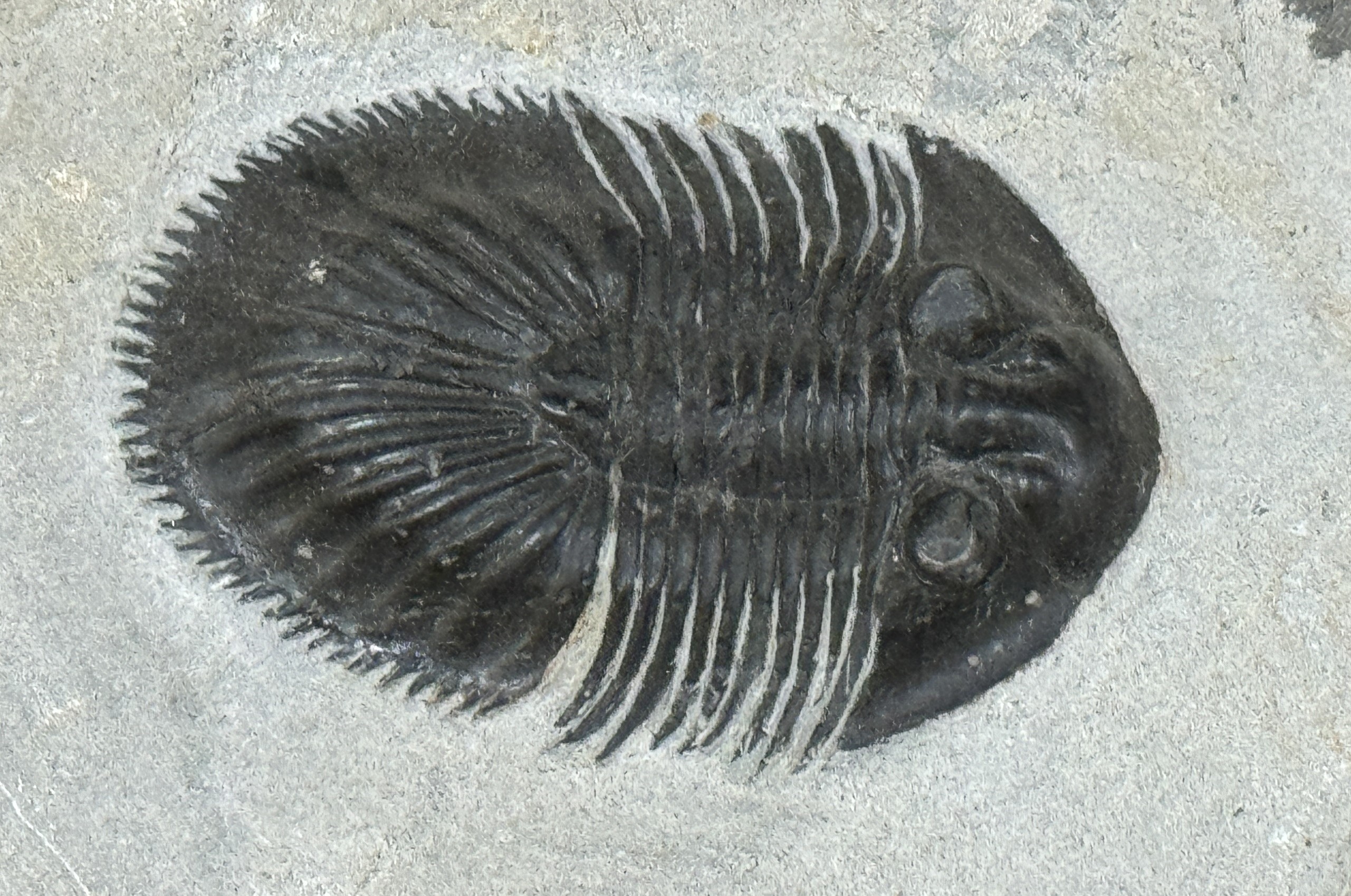Favorite CollLection Triceratops Real Figure Keyring
$11.95

The trilobite is the earliest animal known to possess vision. The remarkable construction and preservation of trilobite eyes enable us to study the development of a sensory organ which is only rarely preserved in other organisms. At least two types of eyes are distinguishable in the trilobites. The schizochroal or aggregate eye may contain from 2 to more than 750 separated lenses.

In addition to the chitinous exoskeleton typical of all arthropods, trilobites typically possessed a mineralized body covering divided into a cephalon (head), segmented thorax (body) and pygidium (tail). The mineralized dorsal exoskeleton and ventral hypostome probably consisted of a primary layer of calcite with additional thin lamellae of chitin and perhaps apatite. This provided protection for the soft parts of the body. Trilobite exoskeletons may be found intact or, more frequently, as disarticulated parts..

The segmented and “jointed” construction of the mineralized exoskeleton allowed many types of trilobites to enroll (roll up in a ball) when facing danger, providing additional protection for the appendages and soft parts. The presence of a hard exoskeleton made it mandatory for the trilobite to molt, or shed its body covering, in order to grow. This molting usually involved some “disassembly” of the mineralized exoskeleton. Thus one trilobite, over its lifetime, may have left many parts to fossilize, but a “complete” articulated specimen always represents the death of that individual.

Trilobites arose and diversified over a span of more than 300 million years. During that time more than 10,000 species developed. Each species possessed a dorsal exoskeleton with unique morphological characteristics. Trilobites came in many different sizes, from the miniscule adult Shumardia which measured less than 5mm long, to the gigantic Uralichas, more than 700mm in length. Trilobites also came in many different shapes. Some trilobites, like Peronopsis, were so conservatively smooth and streamlined in form that it is difficult to tell head from tail. Others, like Olenoides, developed spiny ornamentation which provided additional protection against predators.